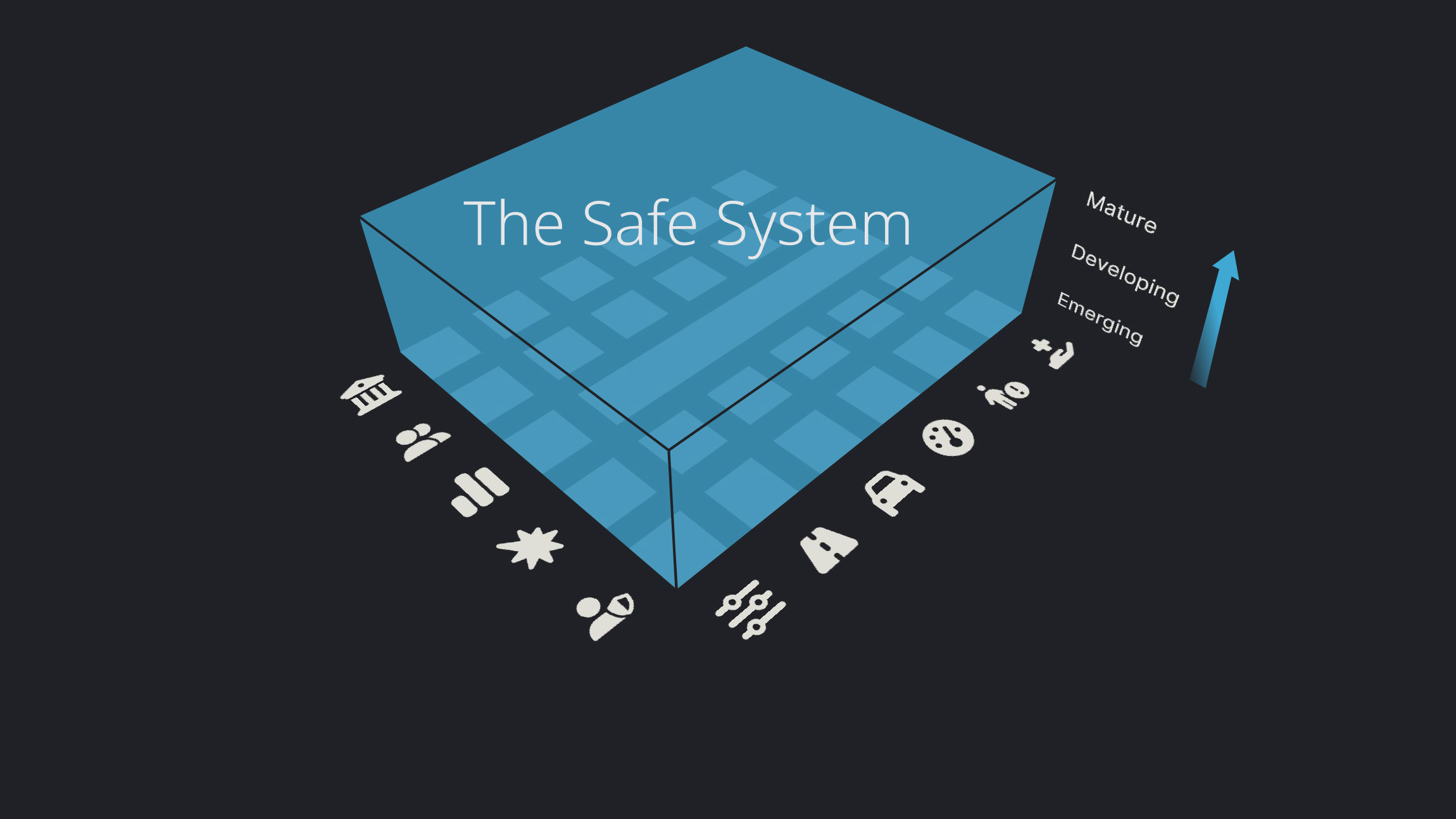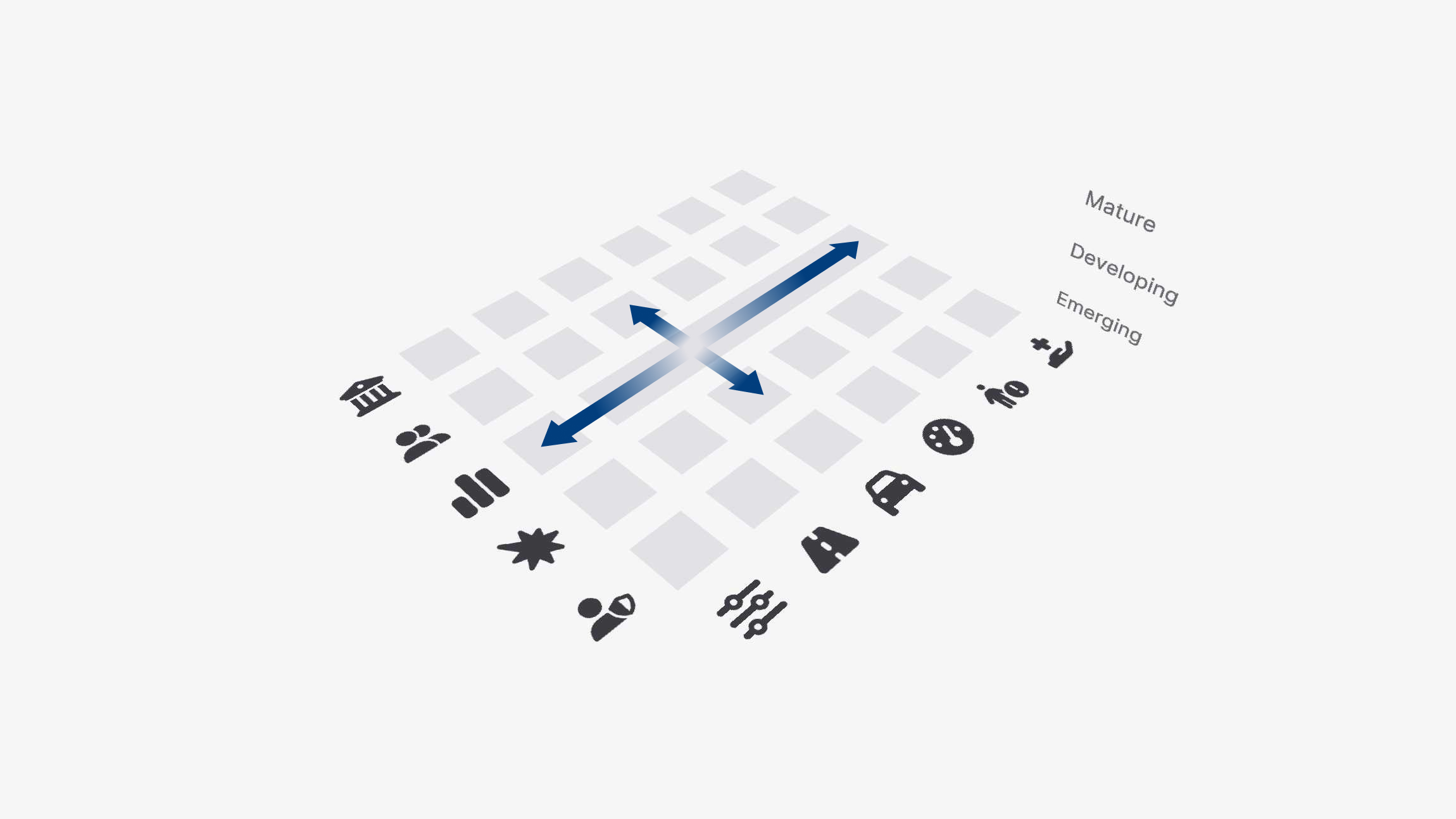How to advance on your Safe System journey
This part of the Tool describes steps you can take to improve the effectiveness of the Safe System if some elements are already in place.
Your challenge is to review each cell in the matrix of the road safety pillars and the Safe System components and assess your current status.
As you go through the matrix, decide at what stage activities in that cell are: emerging, developing or mature. As you self-assess in each cell, the building blocks of the Safe System will rise out of the matrix and visualise where implementation is progressing and where opportunities for further progress open up. The objective is to stack the building blocks of the Safe System as high as possible, and in as many cells as possible within the scope of your project,
A country, city, region, company, institution or project can advance towards full Safe System implementation in two ways:
First, by moving upwards from the "emerging" stage towards "developing" and further to a "mature" stage (see image 1).
Moving upwards reflects the progress made within one cell (area). Suppose a city had improved road safety through measures in a specific framework cell to reach the "developing" stage. Stakeholders in urban road safety could try to find ways to further enhance their safety strategy and action plans to reach the "mature" stage – the city would move upward in the Tool.

 Image 1: Moving upwards towards a Safe System
Image 1: Moving upwards towards a Safe System
This part of the "manual" describes steps that can be taken to improve the effectiveness of the safe system in those cases where some first achievements are already in place. This means that a country, city, region or project has achieved some foundational steps of safe system implementation in some parts of the framework, but not in other parts.

 Image 2: Moving sideways towards a Safe System
Image 2: Moving sideways towards a Safe System
In this framework, improving the safe system can theoretically be achieved in two ways:
By moving upward: suppose that a project has improved road safety in such a way that for a specific cell in the framework the safe system stage "emerging" was reached. Then, actors working on further improvement could try to find ways to further develop their safety strategy and action plans to migrate towards an "advanced" stage. Moving upward would recognize and account for the necessary changes to the people, processes, and tools available.
By moving sideways: either from one key component to another, or from one pillar to another. Suppose a country has reached, say, an emerging level of a safe system approach for one cell while in other cells this stage was not yet reached. Then actors could seek ways to use their experience and network, as was built up in one field of the safe system, to extend the approach to other parts of the framework.
Both approaches are more easily described than carried out. Moving upwards has the disadvantage that the general idea behind the safe system, i.e. addressing all parts of the system, aiming for cooperation between all relevant actors, is less acknowledged. That doesn’t mean we should discard the option. In the case where strong progress has been achieved in one or more cells in a single pillar (e.g. vehicle safety of passenger cars), and appears difficult on other pillars or key components, further improvement for this one pillar is better than doing nothing.